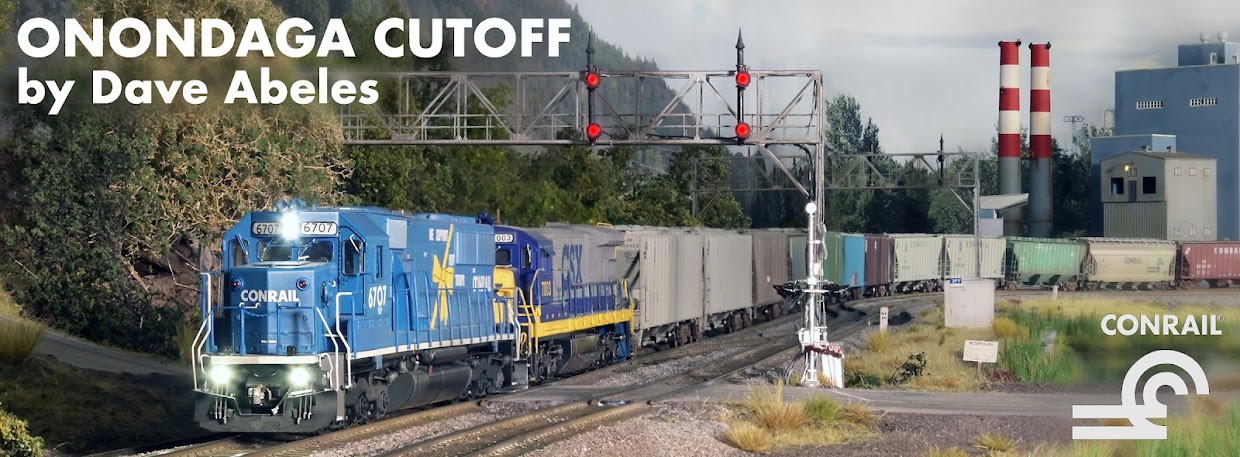Happy Holidays to all! With Christmastime approaching, this is always a busy time of year, but the long evenings make for some time to work on the model railroad. Recently, I have been making some improvements that have come to mind during the recent operating sessions.
One of the big decisions was to go ahead and install bi-color light-emitting diodes (LED) in all of the interlocking model boards to function as indicator lights for turnout position. Due to my use of the stall-type switch machines, I was able to simply wire each LED in series with the switch motor, and the constant DC power that is applied will light each LED. Since the machines move when the polarity of the DC source changes, it works well to make the LED green (normal) or red (reverse) in tandem with the points moving.
Here, we see the model boards at CP 282, the west end of Onondaga Yard, and at CP 274 below, the 'west end' of staging. The cardboard, of course, is temporary, and will be upgraded to a permanent material after the full fascia board is in place.
This particular upgrade is evidence of my philosophy during construction - any upgrades made must minimize the possibility that any work will need to be done twice. In this case, adding LED indicator lights was about 10 hours of work, but it is work that I do not need to do again, since the toggles and lights will simply be transferred to the permanent boards in the same configuration you see here. In the mean time, the operation will be greatly improved, since operators now can easily see how the route is lined ahead, instead of having to always be checking switches.
Another upgrade underway is to tighten my tolerances for freight car standards. Long trains and grades take a toll on freight cars and those that have high or low couplers cause issues during the sessions. Further, the plastic knuckle couplers that come with most kits these days simply are not of high enough quality for a real operating layout like this - there is too much stress, and the plastic deforms. Therefore, all my cars are going through the shop to install Kadee metal couplers, and to ensure that the coupler height is correct.
As I have had time, I also have recently been setting new locomotives up for service. Conrail's Albany Division was always a home for Dash-7 series GE locomotives in the 1990's, and so my railroad is no exception. Over the last month I have made time to install TCS decoders in both of my new Atlas CR B23-7's, seen here at Onondaga Diesel:
These units were delivered to Conrail in the Spring of 1979, and both were looking rather worn by 1994. And so my weathering reflects that. The Dash-7's add a sense of place to the railroad and will spend most of their time in yard and local service.
Finally, a profile shot of 1987 for you:
Merry Christmas to all!
~RGDave




No comments:
Post a Comment